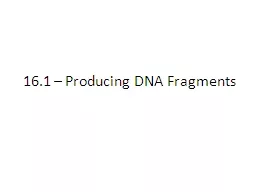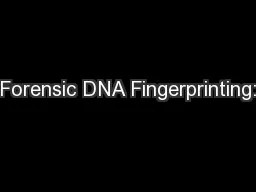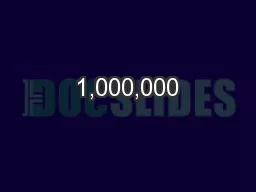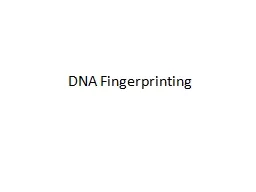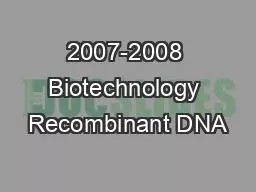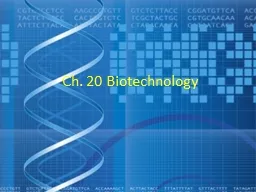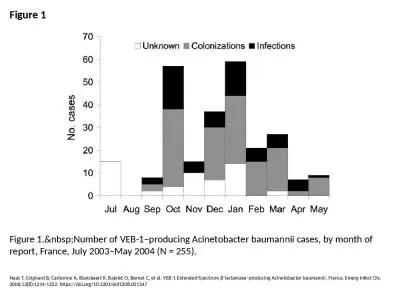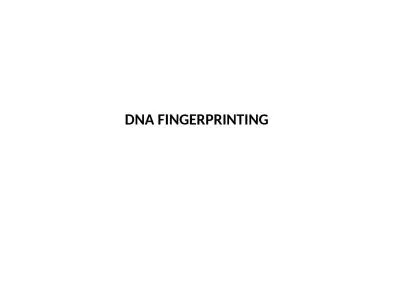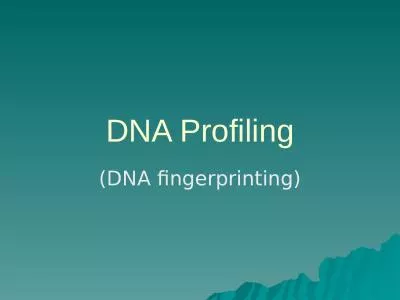PPT-16.1 – Producing DNA Fragments
Author : tatyana-admore | Published Date : 2016-06-22
Genetic Engineering Genetic engineering is a rapidly advancing field of Biology We can now manipulate alter and even transfer genes from one organism to another
Presentation Embed Code
Download Presentation
Download Presentation The PPT/PDF document "16.1 – Producing DNA Fragments" is the property of its rightful owner. Permission is granted to download and print the materials on this website for personal, non-commercial use only, and to display it on your personal computer provided you do not modify the materials and that you retain all copyright notices contained in the materials. By downloading content from our website, you accept the terms of this agreement.
16.1 – Producing DNA Fragments: Transcript
Download Rules Of Document
"16.1 – Producing DNA Fragments"The content belongs to its owner. You may download and print it for personal use, without modification, and keep all copyright notices. By downloading, you agree to these terms.
Related Documents

